INTRODUCTION
We’ve already examined the possible comic influences on the 1943 Batman film serial, so now let’s take a look at Columbia Pictures’ second attempt at bringing the Dynamic Duo to the big screen: the 1949 Batman and Robin film serial, directed by Spencer Gordon Bennet and starring Robert Lowery as the Caped Crusader.
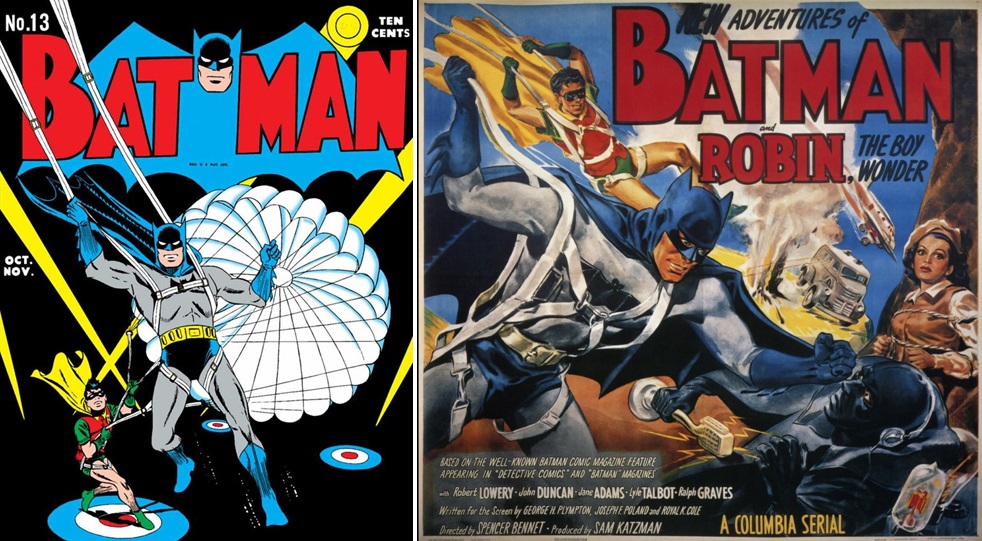
This 15-chapter serial was released ten years after Batman first appeared in Detective Comics Vol 1 #27 (May 1939). The comic book mythology had advanced considerably since the time of the 1943 production. And the political climate was also very different, what with comics and cinema having now entered the post-war period.
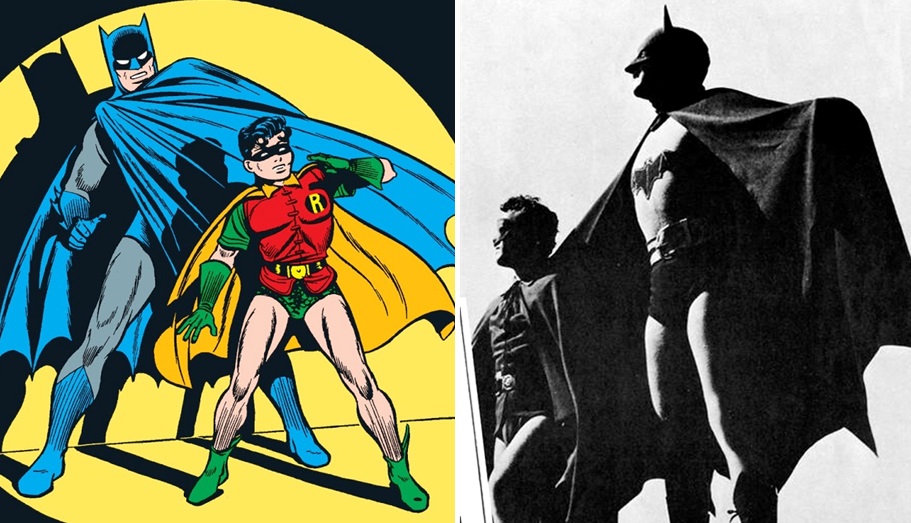
It’s unclear whether the 1949 serial is intended as a direct sequel to the 1943 production or whether it’s meant to be a reboot featuring an entirely new Batman and Robin. There are enough similarities and differences to support either interpretation. But the 1949 serial also includes several elements from the comics that weren't present in the previous production.
What elements might those be? Let’s find out.
Unlike the previous serial, which depicted Bruce Wayne’s home as a large manor located in the hills overlooking the city, the 1949 serial presents his lodgings as a more humble abode situated in Gotham City’s suburbs. This is more in line with what Bruce’s home looked like in the Golden Age comics.
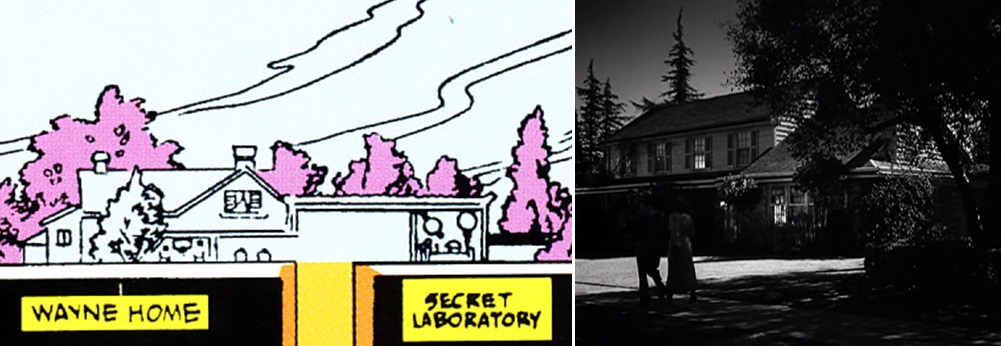
On the subject of Gotham, there’s a street in this serial named ‘Ellsworth Avenue’. This was likely a nod to Whitney Ellsworth, who was editorial director at DC Comics and served as a consultant on all of their film productions.
The Batcave located beneath Bruce’s home is considerably larger than the version from the 1943 serial. It houses a crime lab and a collection of filing cabinets that contain Bruce and Dick’s costumes.
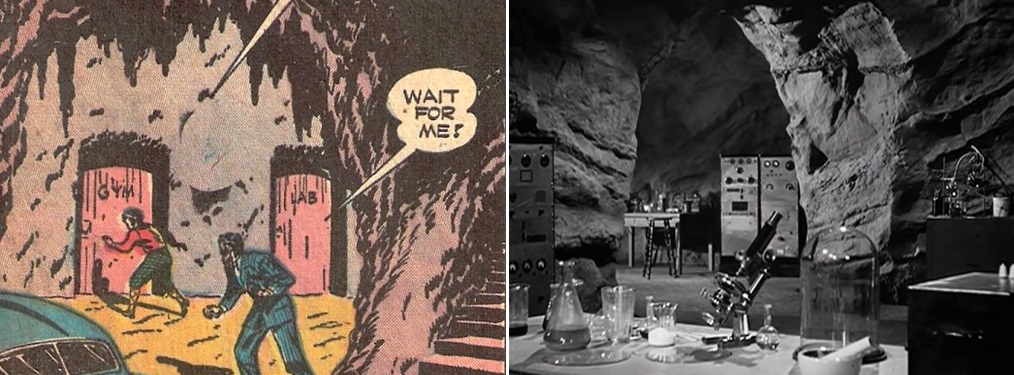
The cabinets also contain profiles of all of Gotham’s criminals, which Bruce refers to as his ‘rogues’ gallery’.
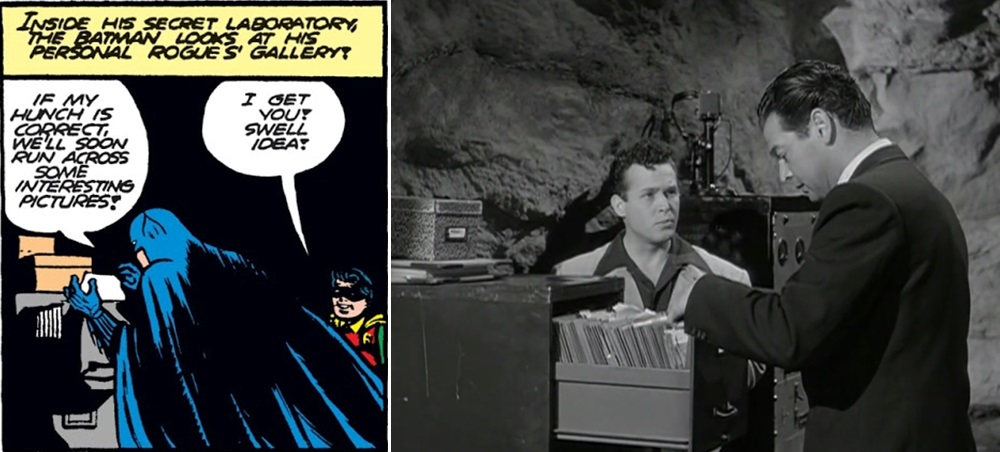
The entrance to the Batcave is concealed behind a grandfather clock in Bruce’s home. This aspect of the mythology was introduced in the 1943 serial and had been incorporated into the comics by time the second serial was produced.
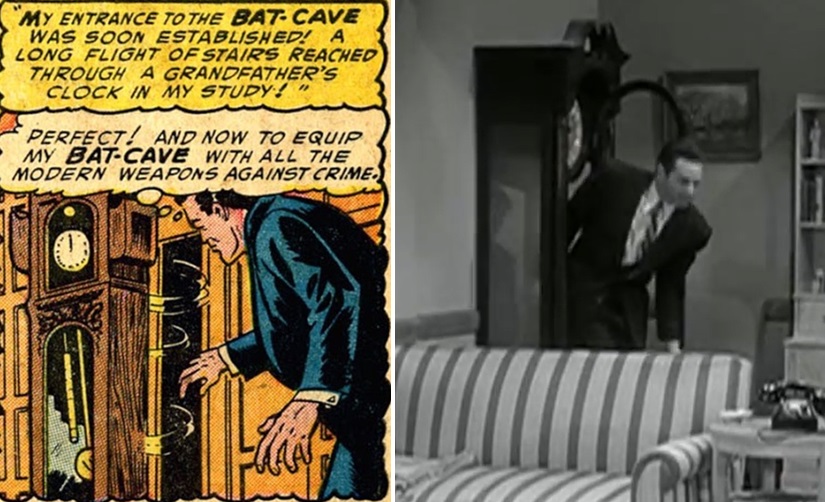
Robert Lowery became the second actor to play Batman and his alter ego Bruce Wayne. Online sources peg Lowery’s height at 6’1, which happens to be the exact same height as the Golden Age Batman, as revealed in ‘The Batman Encyclopaedia’ (Detective Comics Vol 1 #214, December 1954).
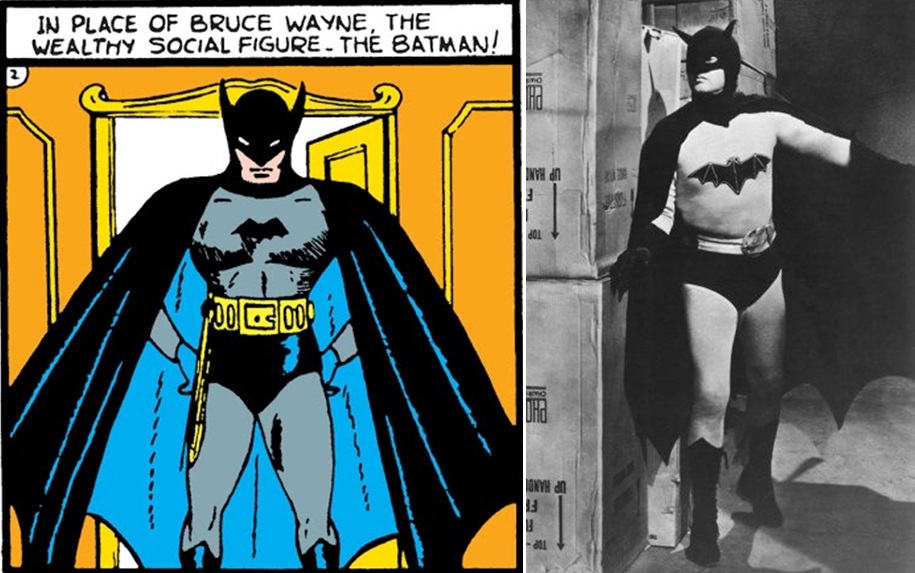
Prior to playing Batman, Lowery had appeared as Rodrigo is Rouben Mamoulian’s The Mark of Zorro (1940) starring Tyrone Power. While other comics have cited the 1920 silent version of The Mark of Zorro as being the version Bruce Wayne saw the night his parents died, Frank Miller clearly identified it as the 1940 version in The Dark Knight Returns (1986). Which means the young Bruce had been watching Robert Lowery on the big screen that fateful night he lost his parents. Subsequent retellings of Batman’s origins have alternated between the 1920 and 1940 versions.
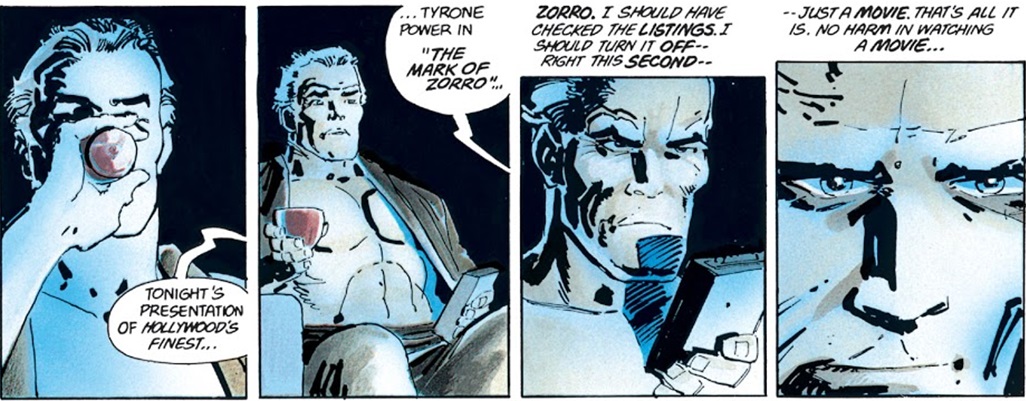
Lowery’s Batman produces a number of gadgets from his utility belt throughout the serial, including an oxygen inhaler and an oxy-acetylene torch. One of the more amusing aspects of this serial’s limited production values is the way these large items spontaneously appear on Batman’s belt when the situation calls for them, despite clearly not being there in the previous or subsequent shots.
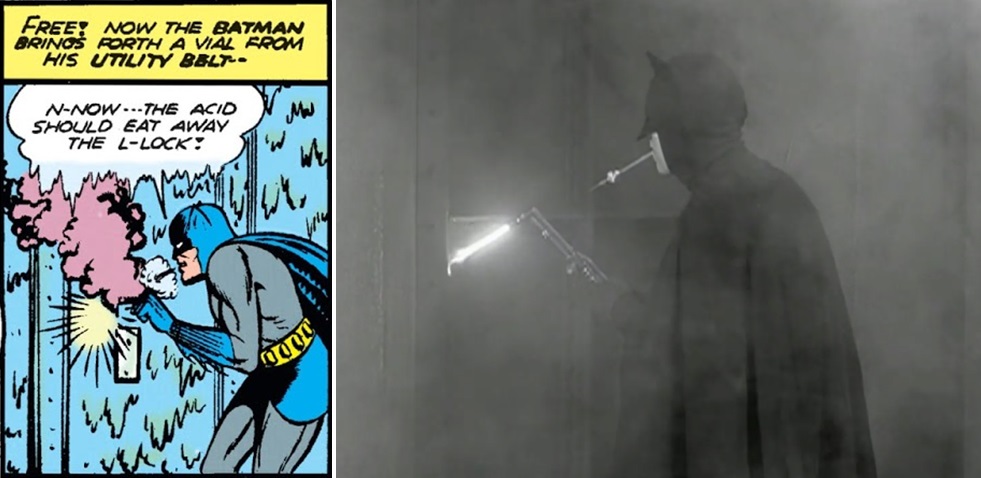
Lowery’s Batman occasionally drapes his cape over his arm in such a way that evokes one of Batman’s classic poses from the comics.
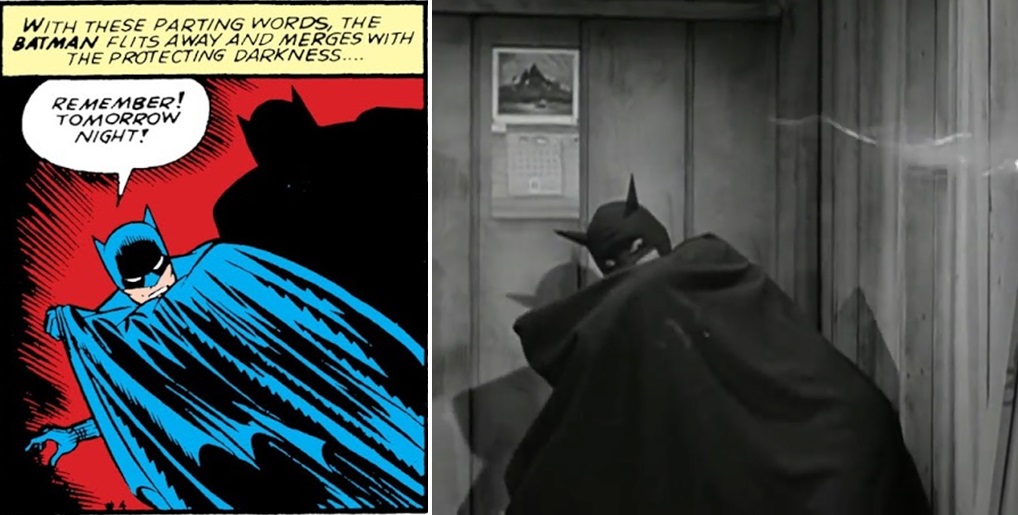
Batman’s fighting prowess had been downplayed in the 1943 serial, but Lowery’s Batman is shown to be a far more formidable combatant.
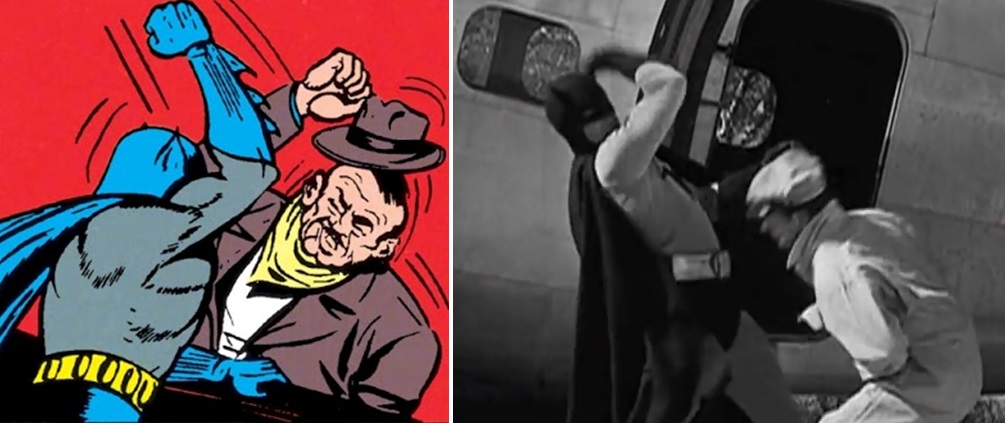
He demonstrates a proficiency at judo.
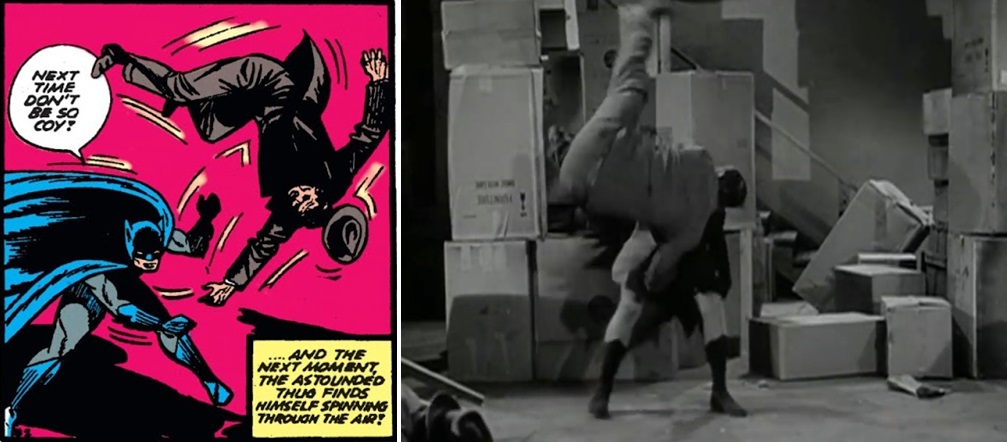
On more than one occasion he is shown to smash together the heads of two goons. This was one of the Golden Age Batman’s signature fighting moves in the comics. The Michael Keaton Batman also used it in Tim Burton’s Batman Returns (1992).
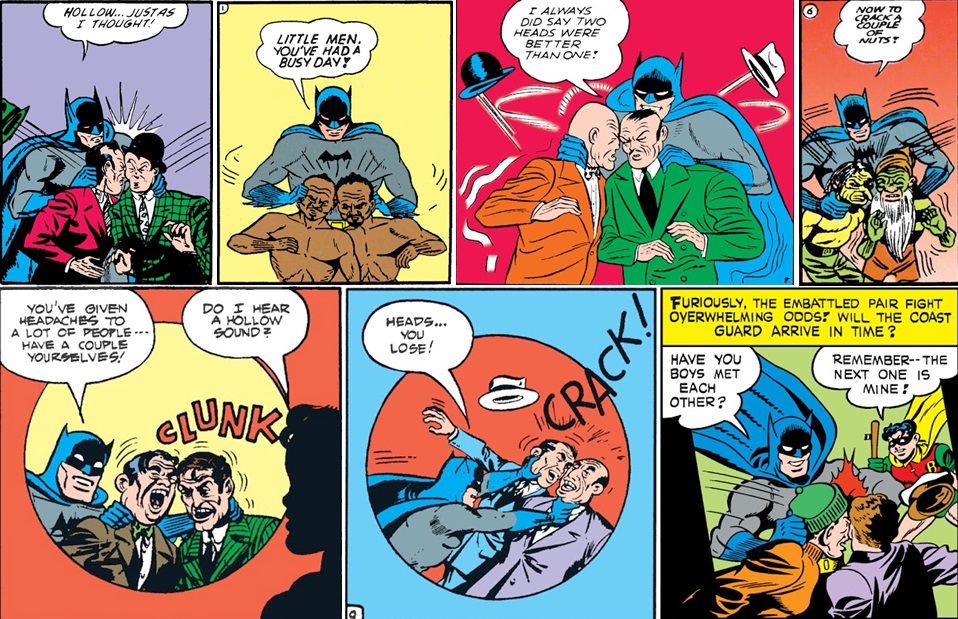
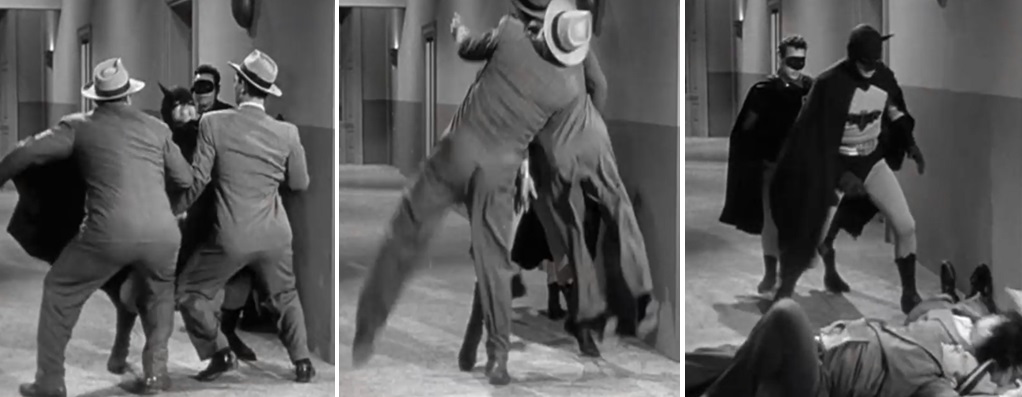
During one fight scene Batman socks an opponent while Robin crouches behind him so that he trips over backwards.
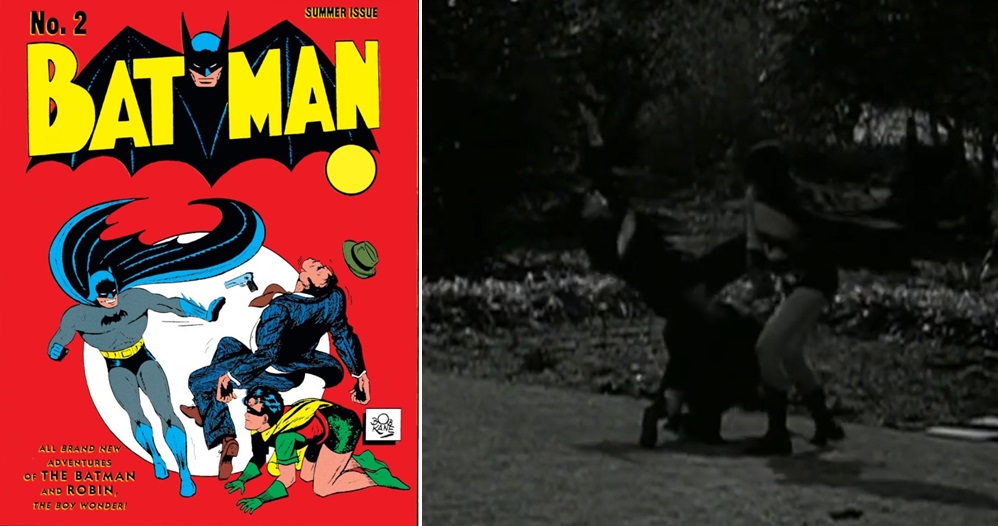
Bruce Wayne lives with his young ward Dick Grayson, played this time by Johnny Duncan.
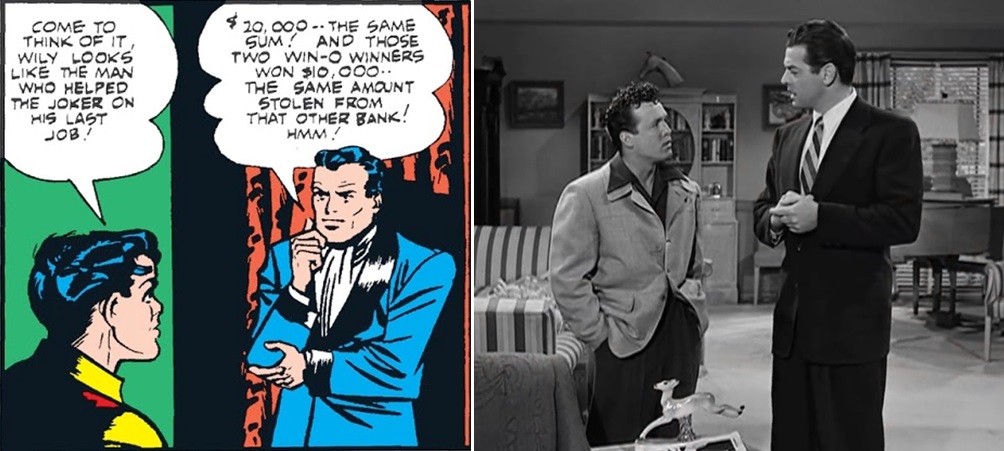
Duncan’s Robin costume is mostly faithful to the one from the comics, with the notable difference that his cape is dark instead of bright yellow. However the film serial’s poster art shows him wearing the bright yellow cape from the comics.
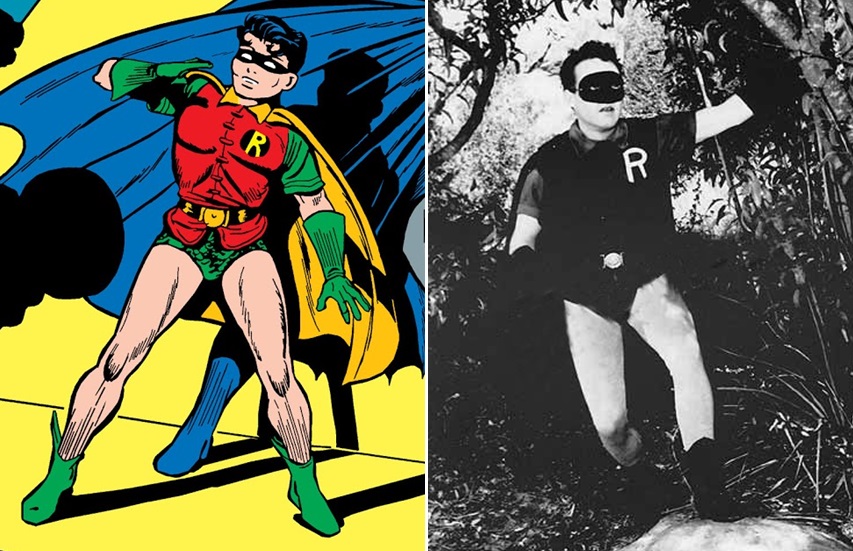
As in the 1943 serial, Batman and Robin drive an ordinary nondescript automobile. Several Batmobiles had featured in the comics by this point. The Batmobile was likely omitted from the film serial for budgetary reasons.
Bruce's loyal butler Alfred is played by Eric Wilton.
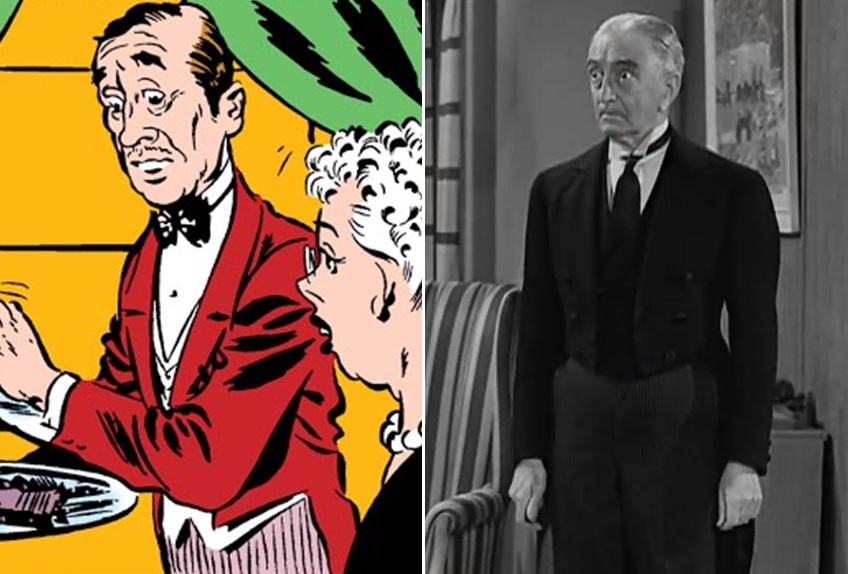
At one point Bruce is captured by a gang of criminals who suspect he is Batman. It falls on Alfred to don the batsuit in order to throw them off the scent. Comparable situations have arisen in the comics where Alfred has been required to wear the batsuit. The following panel is from ‘The Duped Domestics’ (Batman Vol 1 #22, April 1944).
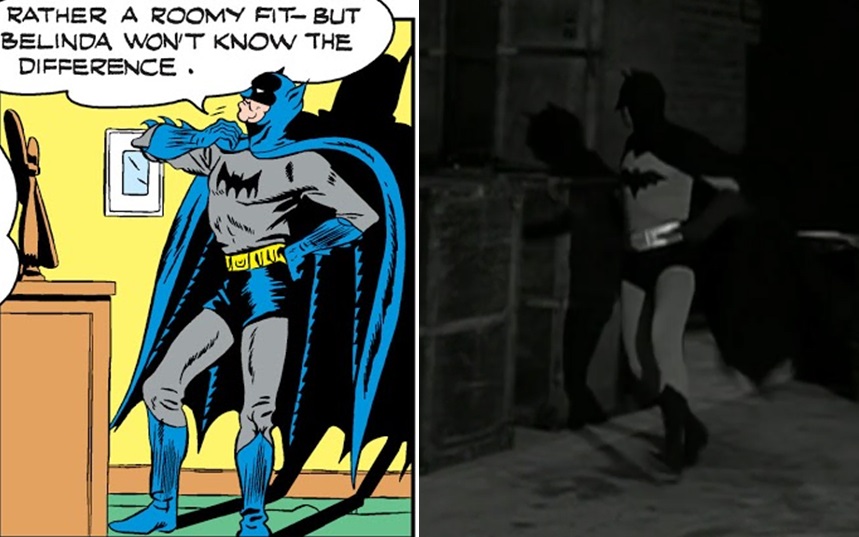
Vicki Vale makes her live action debut in the 1949 serial portrayed by actress Jane Adams. As in the comics, she’s depicted as a plucky photojournalist with a knack for getting herself into trouble. She has a brother named Jimmy who is a small-time crook, while in the comics Vicki had a sister named Anne. Vicki first appeared in ‘The Scoop of the Century!’ (Batman Vol 1 #49, October 1948).
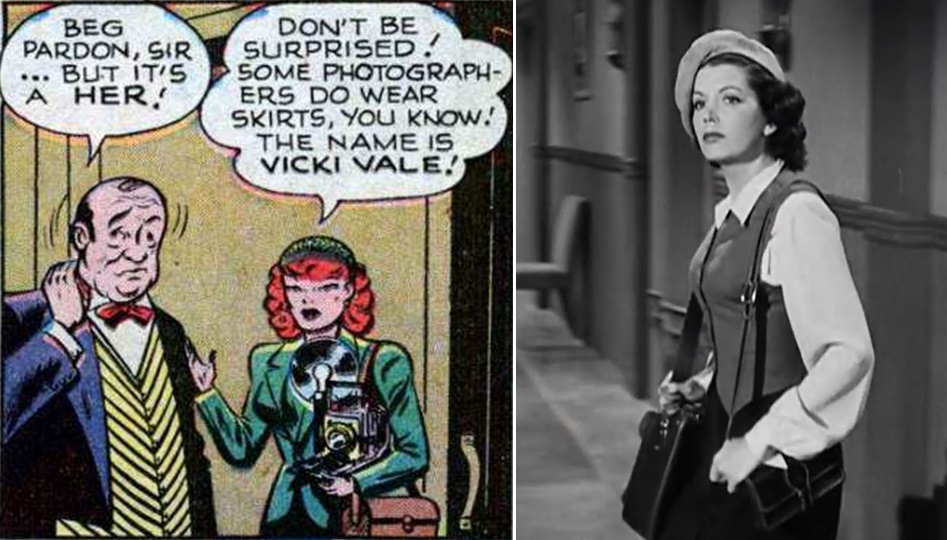
Vicki’s debut story in the comics revolved around her trying to document Batman’s crime fighting career with her camera. She also tries to take pictures of him and his exploits in the film serial. There’s a humorous subplot where Vicki suspects Bruce Wayne might be Batman. This reflects a running storyline in the Golden Age comics where she suspected the same thing but could never gather the evidence to prove it. She eventually gives up on the idea of Bruce being Batman in both the comics and the serial.
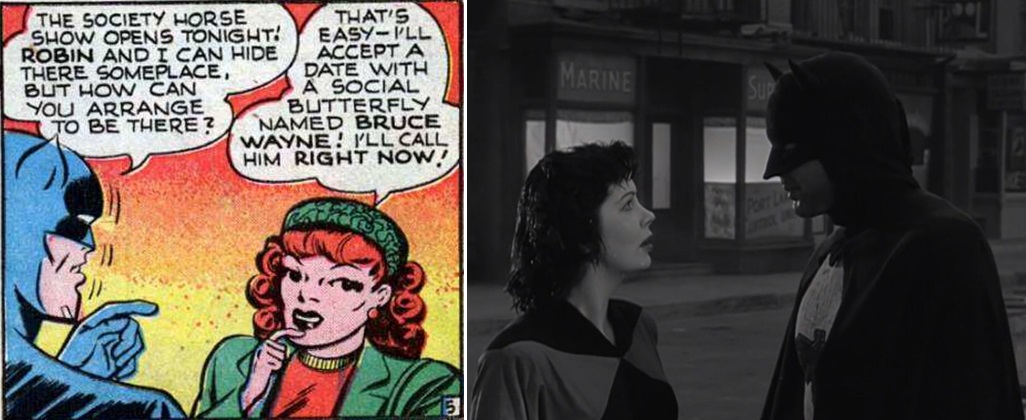
This serial also marks the first live action appearance of Commissioner Gordon, played by Lyle Talbot.
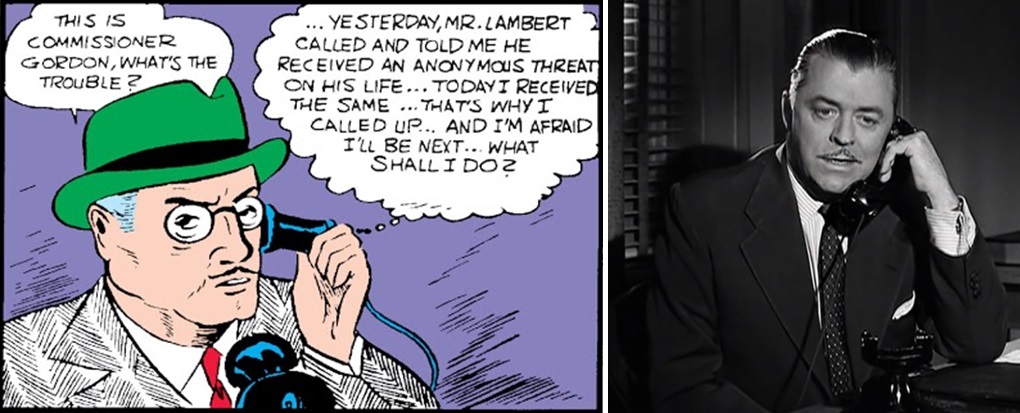
DC Comics fans may recognise Talbot from another classic film serial. One year after he brought Gordon to life in Batman and Robin, he returned to the genre to portray the first live action incarnation of the Man of Steel’s nemesis – Luthor – in Atom Man vs. Superman (1950).
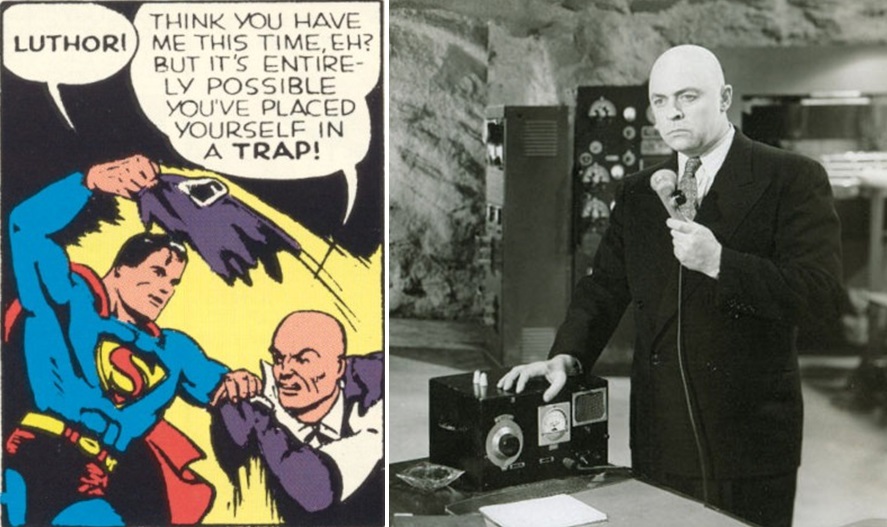
While the previous serial had shown Batman and Robin ducking the police and only communicating with them by letters and telephone messages, the Lowery Batman is shown to actively collaborate with Gordon and holds regular consultations with him in his office at police HQ. Such scenes were familiar to readers of the comics at the time.
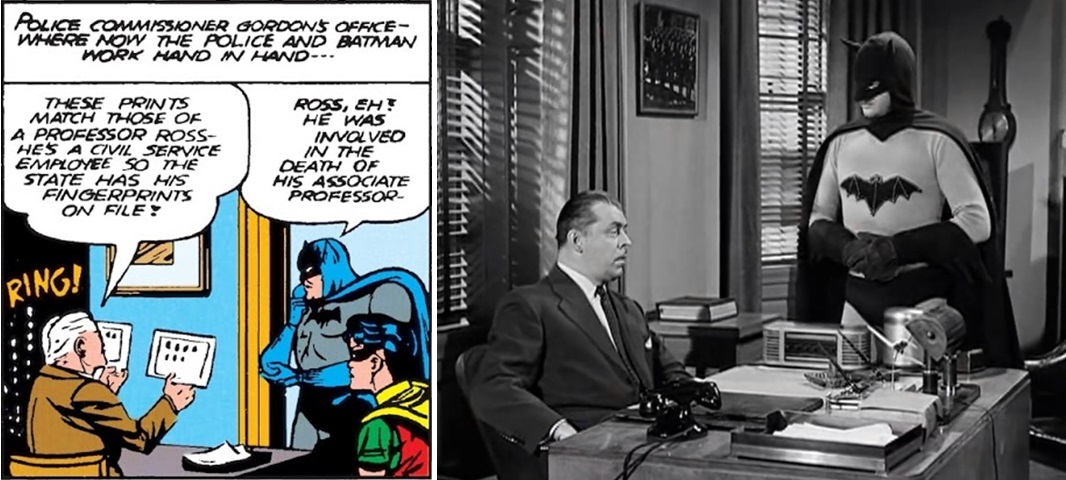
The 1943 serial had shown Robin shining a miniature bat-signal into a gang’s hideout to make them think Batman was outside. Duncan’s Robin repeats this trick on two occasions in the 1949 serial. But Gordon also has a larger bat-signal that he shines into the sky to summon Batman. This marks the first cinematic appearance of the real bat-signal. Only here it is located within Gordon’s office at police headquarters instead of on the roof.
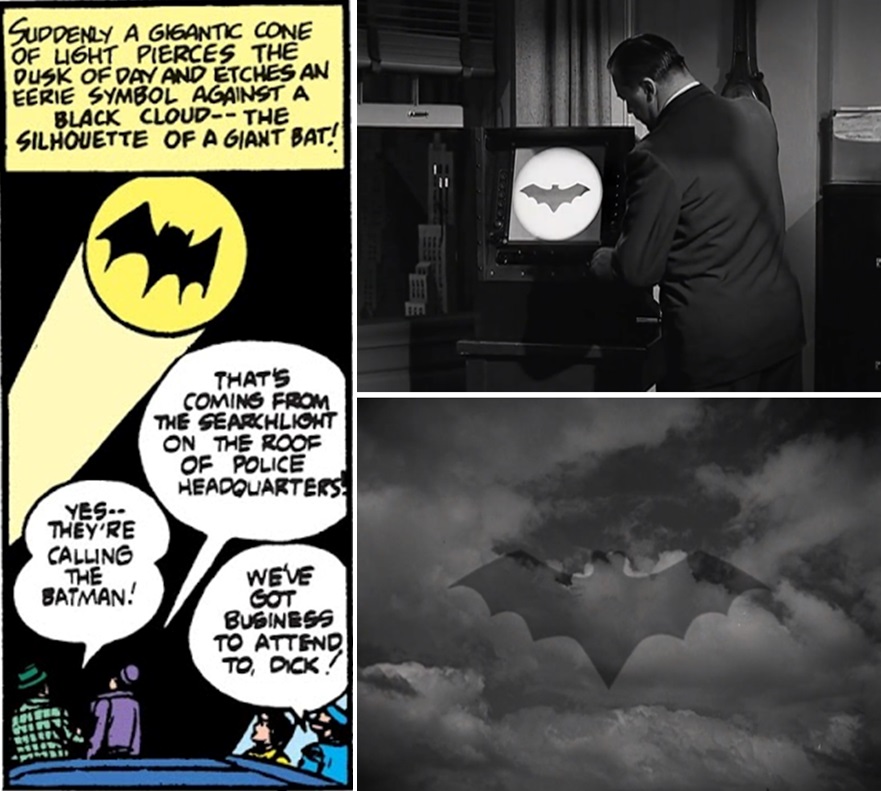
The main antagonist in the 1949 serial is a costumed supervillain known as the Wizard. There was a DC Comics villain with this name during the Golden Age, but he and the film version have little in common aside from the fact they each possess a tool that allows them to turn invisible. The comic Wizard first appeared in ‘The Wiles of the Wizard!’ (All-Star Comics Vol 1 #34, April 1947).
The Wizard in the film serial wears a costume that includes a mask with eyeholes cut out. Such generic masks were common amongst Batman’s more forgettable Golden Age foes.
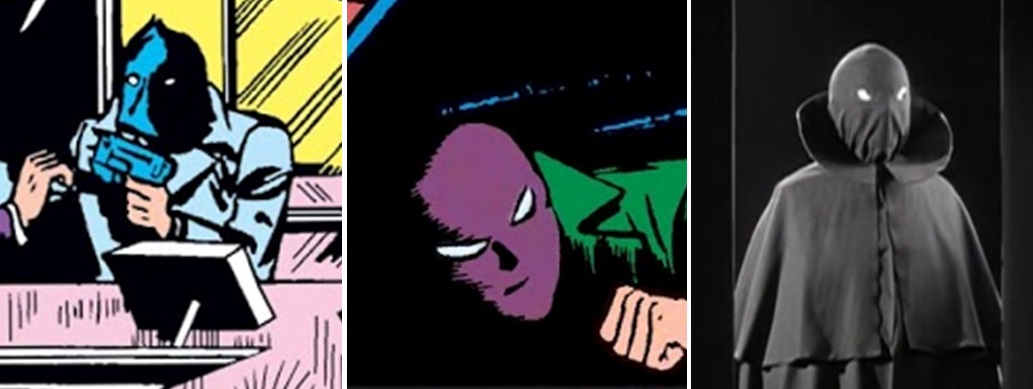
In the latter half of this serial the Wizard develops a method for turning himself invisible. The Golden Age Batman faced a similar dilemma in ‘The Invisible Crimes’ (Detective Comics Vol 1 #138, August 1948) when the Joker stole an elixir that granted him invisibility.
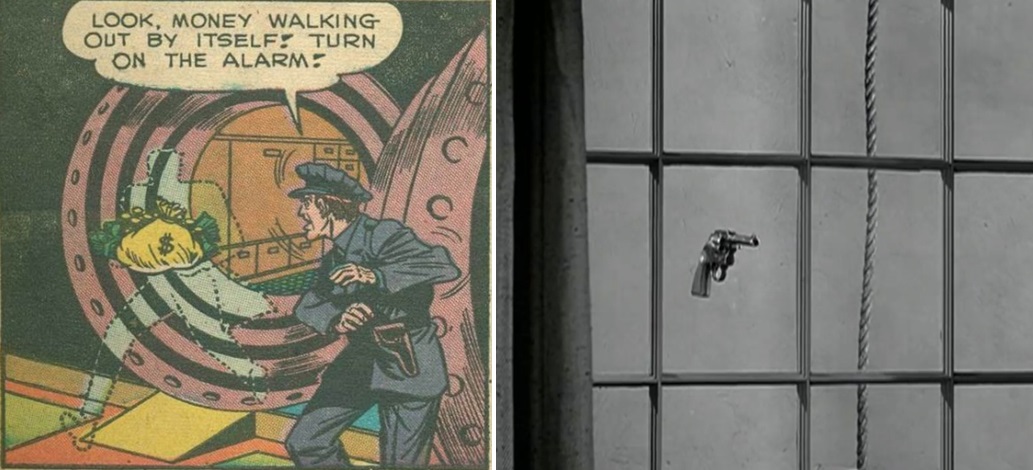
One of the Wizard’s main weapons in this serial is a device that allows him to take remote control of any vehicle. Using this contraption he is able to exact a ransom from the railroad company. In accordance with Batman’s instructions, the ransom is paid using irradiated bills so the Dynamic Duo can trace them to the villains’ hideout. The Christian Bale Batman would go on to use the same trick to trace laundered mob money in Christopher Nolan’s The Dark Knight (2008).
There’s a subplot in this serial concerning a radio broadcaster named Barry Brown who transmits information to the Wizard and his cohorts during his newscasts. This is somewhat reminiscent of station S-W-A-G from ‘The Three Racketeers’ (Detective Comics Vol 1 #61, March 1942), where a criminal made similar use of radio broadcasts to facilitate his crimes. The main difference is that Barry Brown was tricked into helping the Wizard, while the broadcaster in the comic intentionally used his radio messages to serve his criminal agenda.
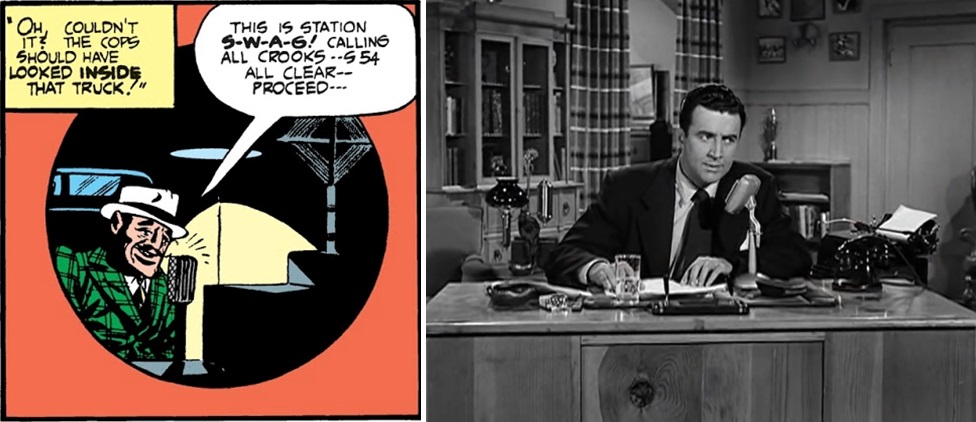
Batman and Robin are both portrayed as capable pilots in this serial, as were their Golden Age counterparts.
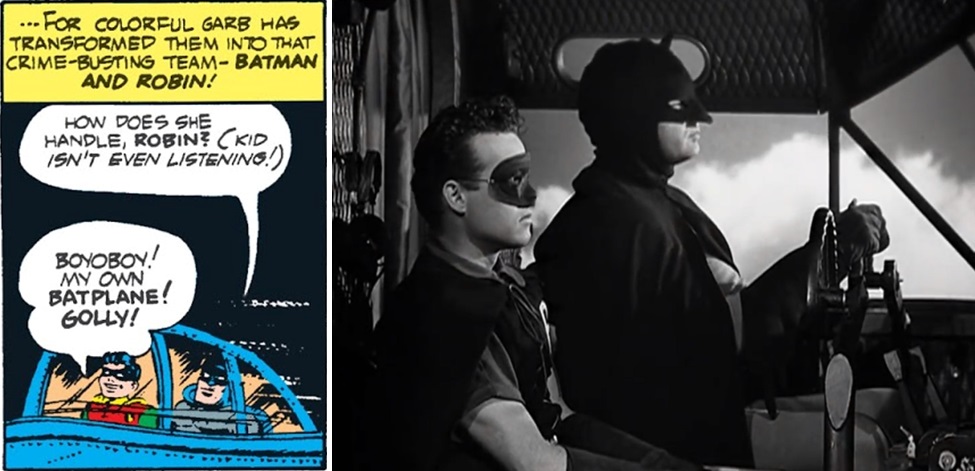
Batman is also depicted as a skilled parachutist.
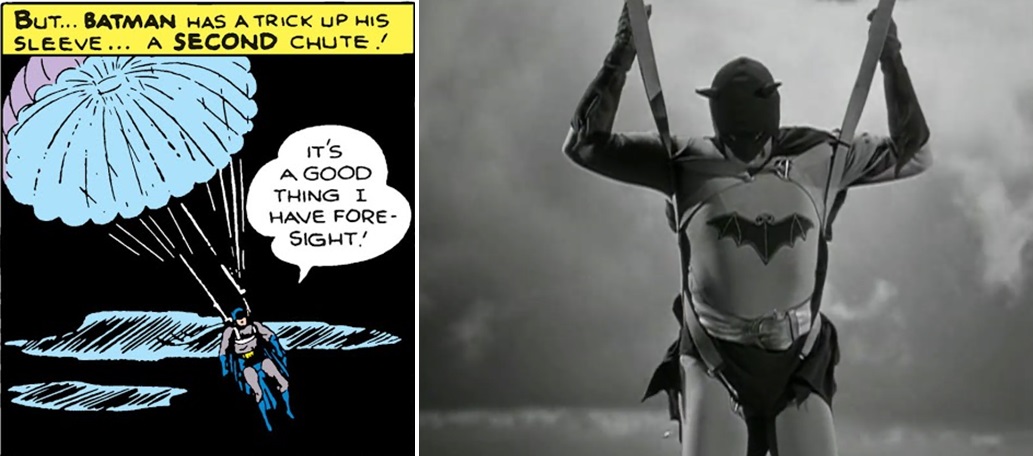
One of this serial’s more spectacular set pieces involves Batman climbing aboard a moving train and fighting a band of criminals on the roof. There are plenty of examples of fights like this in the Golden Age comics. The following panel is from ‘Wanted: Practical Jokers’ (Batman Vol 1 #7, October 1941).
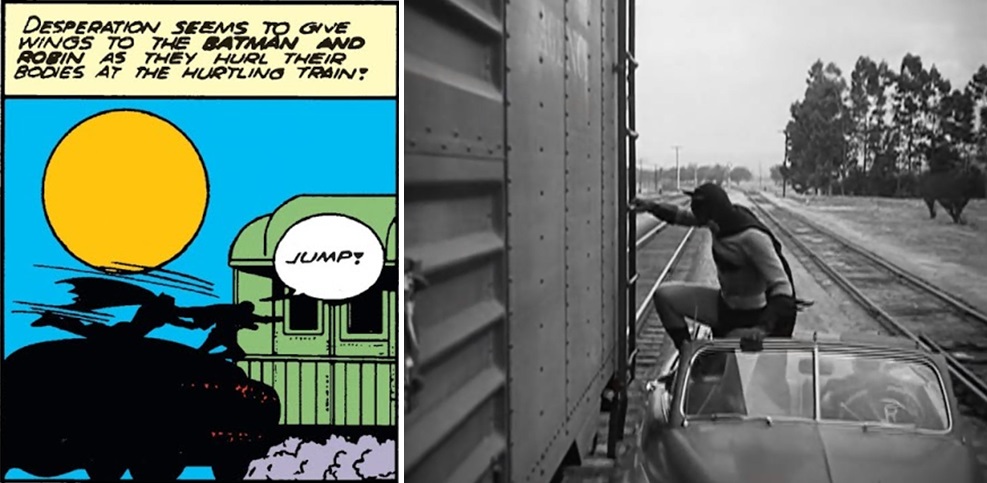
These next few examples are taken from ‘The Case of the Missing Link’ (Batman Vol 1 #2, June 1940).
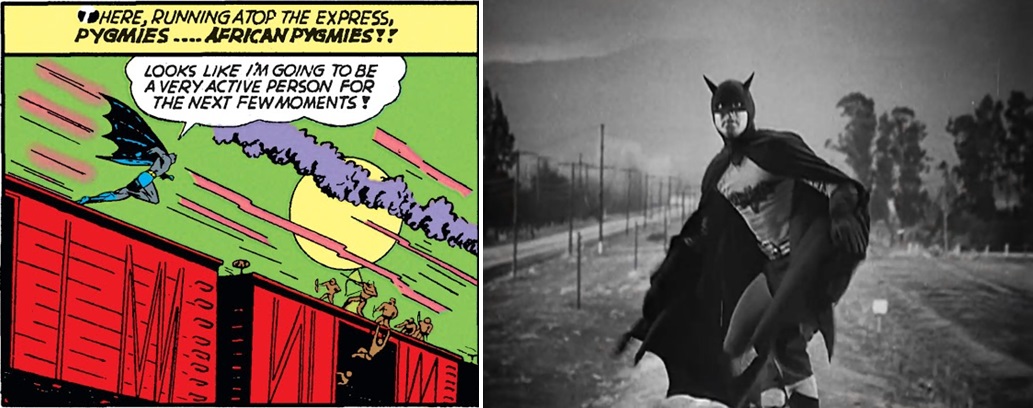
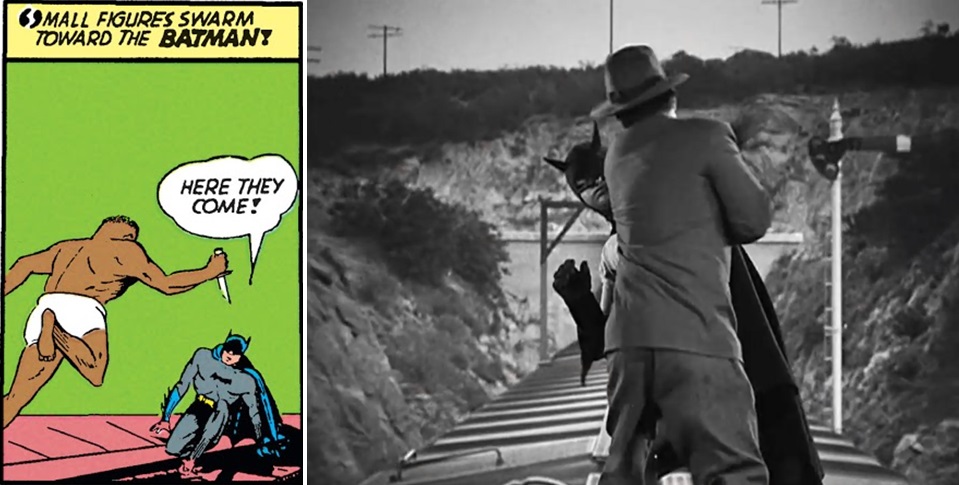
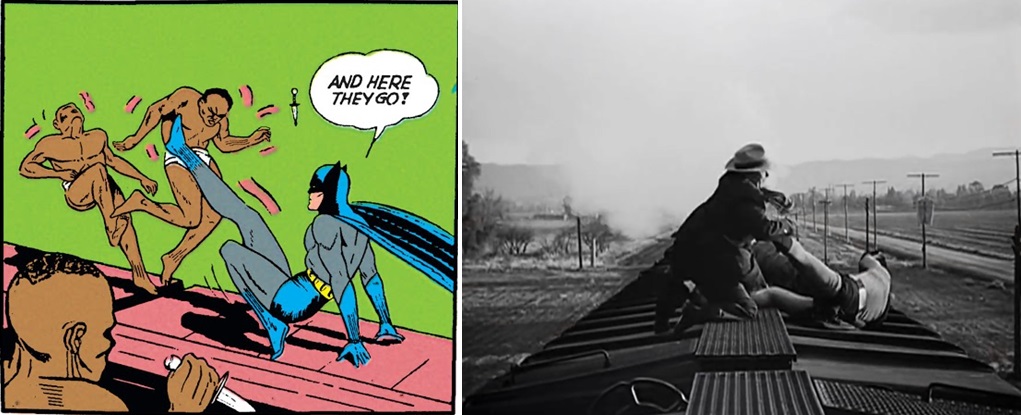
Lowery’s Bruce is a master of disguise. There’s a sequence where he makes himself up to look like a wounded criminal in order to infiltrate that crook’s former gang.
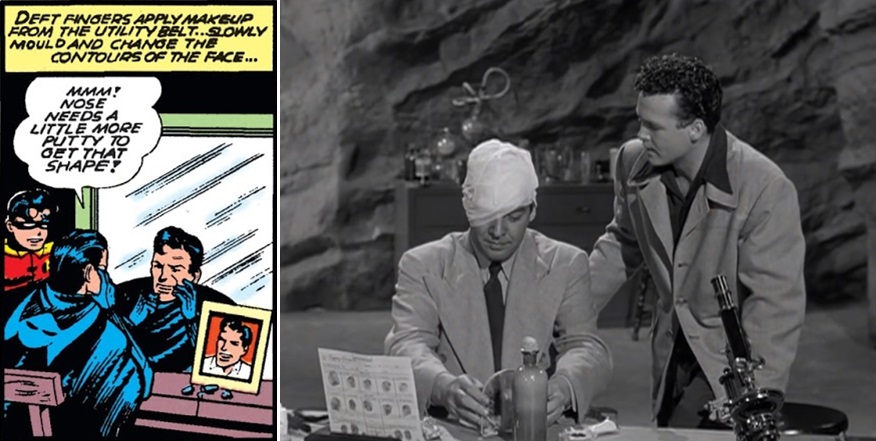
While undercover, Bruce has to prove his loyalty to the villains by shooting Robin with a pistol. A similar incident occurred in ‘Commissioner Gordon Walks a Beat’ (Detective Comics Vol 1 #121, March 1947) where Batman had to shoot Gordon to win a bet against underworld boss ‘Sure Thing’ Smiley. In both the comic and the film serial, Batman shoots at his ally using a real bullet while his criminal foe bears witness. In the comic it turns out Batman had rigged a bulletproof pane of glass between himself and Gordon, while in the film serial he shoots Robin in the belt buckle. In both stories Batman’s ally survives without serious injury.

Batman discovers one of the Wizard’s discarded gloves at a crime scene and takes it back to his lab in the Batcave. There he conducts tests to extract fingerprint samples from the interior and expose the Wizard’s true identity. An identical plot point occurred in ‘The Strange Case of Professor Radium’ (Batman Vol 1 #8, December 1941) where the Golden Age Batman acquired one of the title villain’s gloves and subjected it to the same tests.
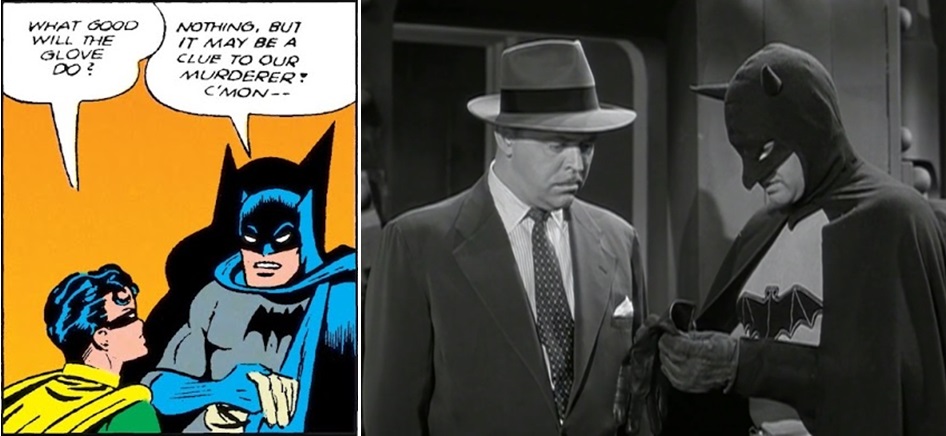
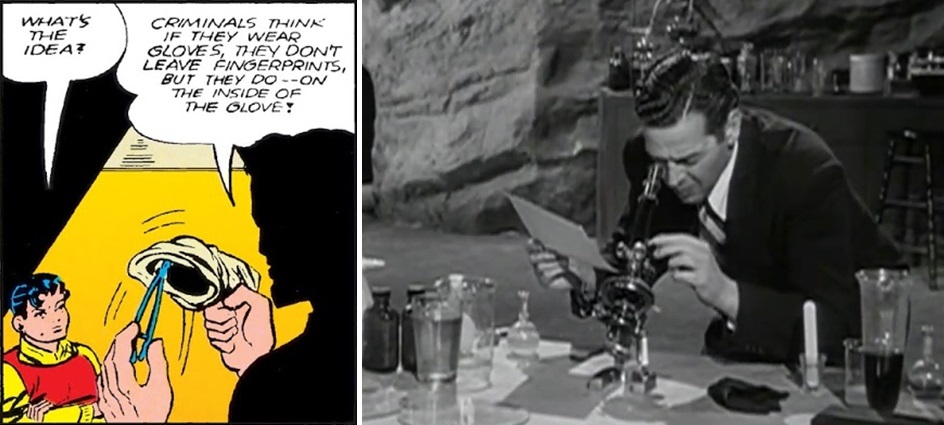
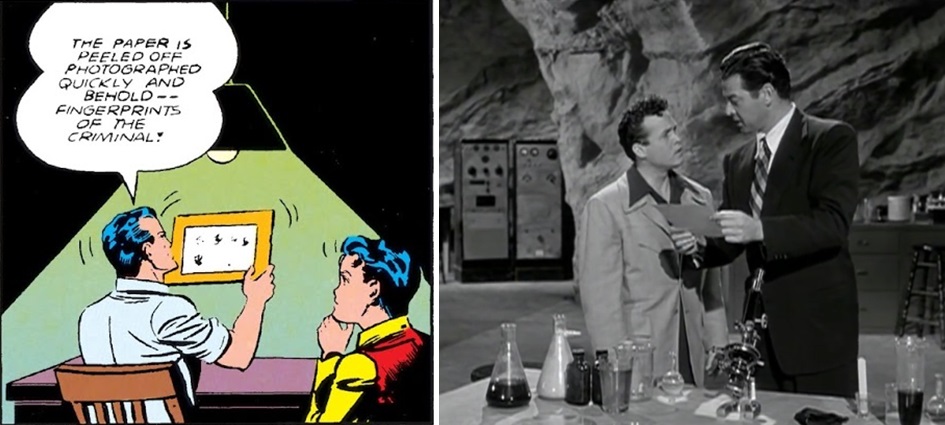
With the villain’s true identity exposed, Batman and Robin are able to capture the culprit and put a stop to his dastardly plans. One final thing to mention about the 1949 serial is that Lowery’s Batman never kills. Wilson’s incarnation caused the deaths of several criminals, but Lowery’s is able to overcome his adversaries using nonlethal methods. This reflects Batman’s moral code in the comics which has been dominant (thought not altogether consistent) since 1940.
And that concludes this analysis of the 1949 Batman and Robin film serial.
comments powered by Disqus












by Silver Nemesis
by The Dark Knight
by Silver Nemesis
by The Dark Knight
by The Dark Knight
by Silver Nemesis
by The Dark Knight
by The Joker
by Slash Man
by Silver Nemesis